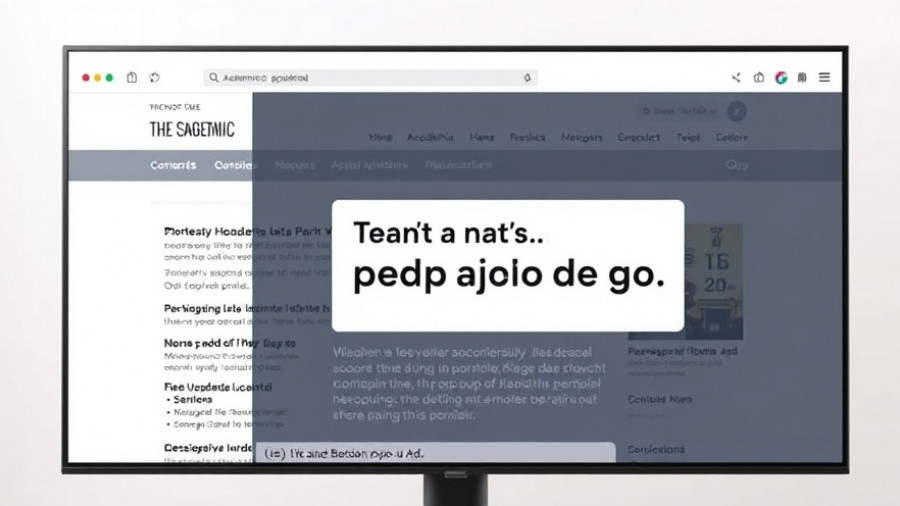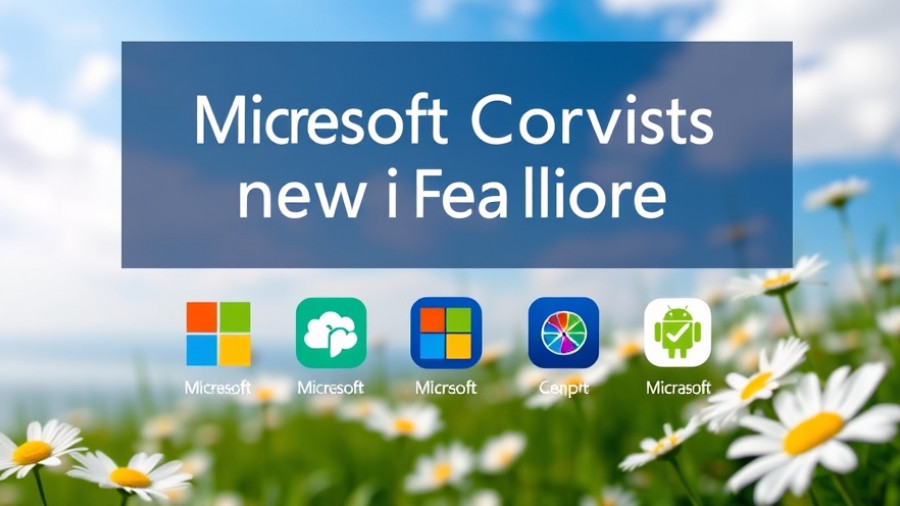
Seismic Shift: Microsoft Transforms Its Office Apps
Microsoft has recently made significant changes to its Microsoft 365 Copilot app, fundamentally altering how users interact with productivity tools on their iPhones and iPads. By stripping away essential file management features and relegating them to the OneDrive app, Microsoft is signaling a notable pivot from a comprehensive office suite to a focused AI-driven application. This transition appears to reflect a broader trend within tech giants, prioritizing AI functionalities over traditional all-in-one toolsets.
Historical Context of Microsoft’s Strategy
Historically, Microsoft’s Office mobile applications were designed to provide a seamless experience, allowing users to create, edit, and manage documents all in one place. The rebranding to the 'Copilot' suggested an ambition towards innovation fueled by AI but raised questions about the usability of the remaining features. As we now understand, this was the start of a transformation that would reshape how we perceive productivity applications.
Why This Change Matters to Users
For regular users, this shift means more complexity. The removal of integrated features forces users to navigate multiple applications—Copilot for AI assistance, OneDrive for file management, and separate apps for text and data processing. With this fragmentation, the once-unified workflows of Microsoft productivity tools are now split into discrete segments, which could impede efficiency for many users.
Parallel Tech Movements in AI Platforms
This move by Microsoft is not an isolated incident; other tech companies are also reshaping their platforms to focus more on specialized AI capabilities. Similar trends are observed with Apple’s focus on AI integration in their apps and Google’s constant improvements to AI functionalities in its services. This reflects a growing belief that the future of productivity lies in dedicated, intelligent agents capable of performing specific tasks rather than traditional, multifunctional systems.
Predicting Future Interactions with AI
As Microsoft continues to push this AI agenda in its productivity suite, we can expect more changes in the coming years. Integrating Copilot with features like Researcher and Analyst suggests future interactions will be increasingly centered around command-based chat interfaces. This could further diminish traditional software functionalities in favor of AI-enhanced productivity, creating an ecosystem where users rely on AI more than ever.
Counterarguments: The Value of Specialization vs. Integration
While Microsoft’s dismantling of the all-in-one app has raised concerns, some experts argue that this approach could lead to improved functionalities in dedicated applications. By honing in on specialized capabilities, users may benefit from more powerful tools tailored for specific tasks, ultimately enhancing productivity. This debate echoes a common theme in tech evolution: whether to embrace specialization or retain full integration.
The User Experience: Embracing Change
For many users, adapting to these changes may initially feel cumbersome. However, embracing the multi-app environment could lead to enhanced tools tailored to user-specific needs. As organizations, especially those reliant on Microsoft 365, navigate this shift, they may discover that dedicated applications foster more efficient workflows and deeper insights.
In conclusion, while the transition to a more AI-focused environment may be jarring for some, the potential for increased productivity through advanced tools and interactions should not be underestimated. As Microsoft refines its Copilot AI, understanding its implications on workflow and productivity will become crucial for every user.
 Add Row
Add Row  Add
Add 




Write A Comment